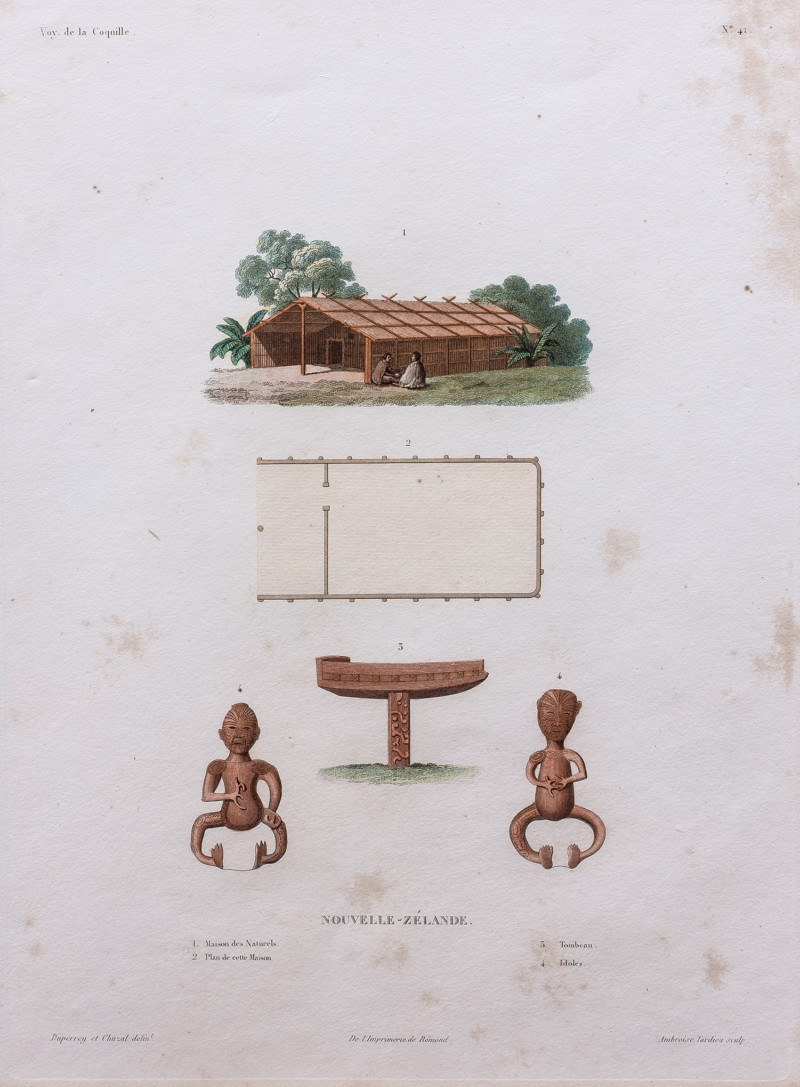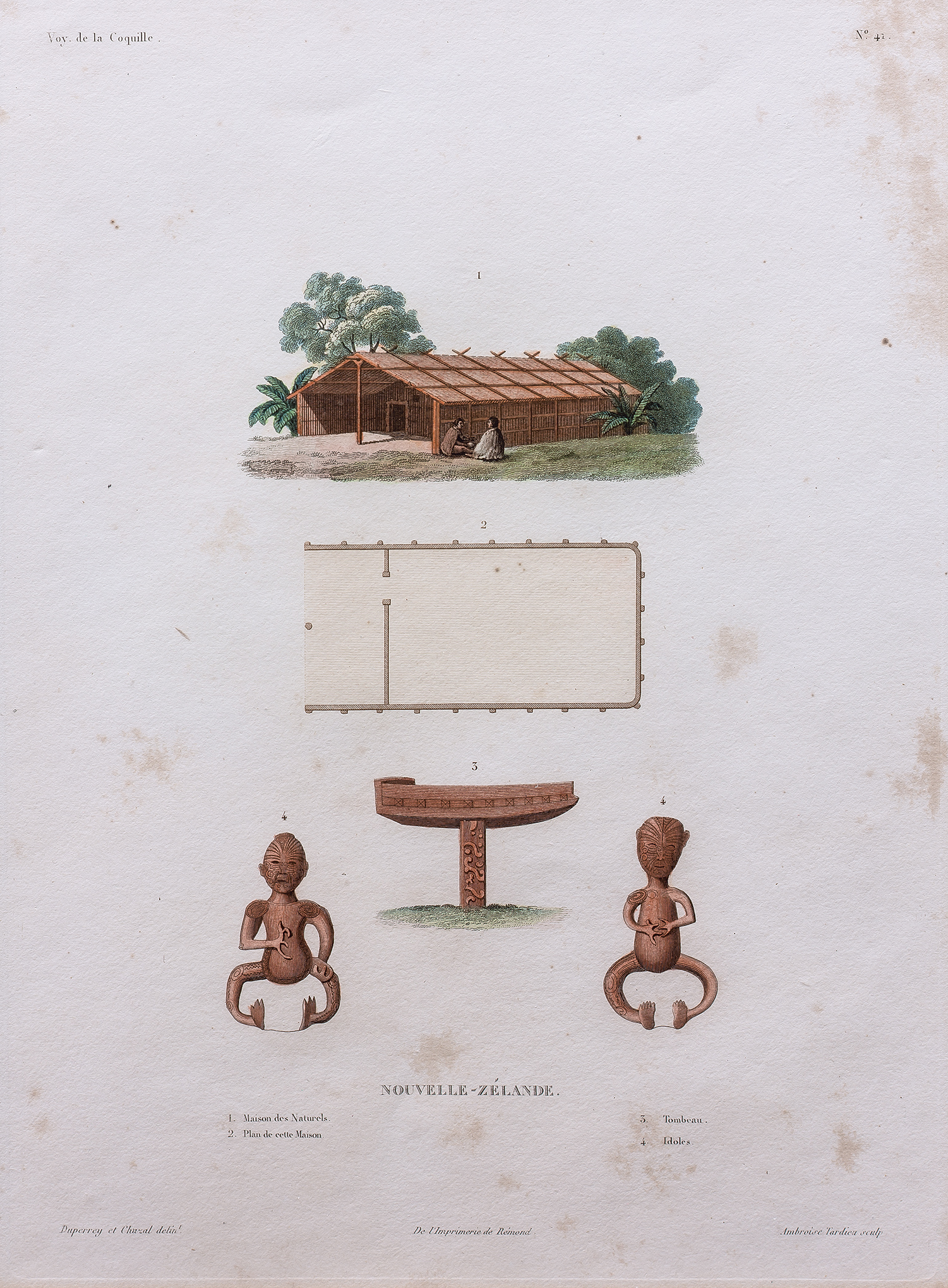DUPERREY, Louis Isidore; CHAZAL, Antoine;
New Zealand: Native House, Plan of the House, Tomb, Carvings
1826
Hand-coloured engraving on paper
555 x 340mm

Original title: ‘Nouvelle-Zélande: 1. Maison des Naturels, 2. Plan de cette Maison, 3. Tombeau, 4. Idoles’. Engraved by Ambroise Tardieu. Plate No. 41 from Louis Isidore Duperrey, Voyage autour du monde, exécuté par ordre du roi, sur la corvette de Sa Majesté, la Coquille, pendant les années 1822, 1823, 1824, et 1825 (Paris: Arthus Bertrand, 1826). Other lithographs from the series can be viewed here.
The following text comes from the catalogue for the exhibition Tirohanga Whānui.
A contemporary description of this whare by the collector of botanical specimens and ship’s surgeon, René Primevère Lesson is quite at variance with its clean and tidy appearance in Tardieu’s engraving:
‘Their dwellings, instead of being spacious and airy, which would be a disadvantage in a country lashed by tempests of the southern hemisphere, are small and low, and their villages or hippahs [pā] are never situated on the plain, where they could be attacked in a surprise raid, but are always on the topmost points of steep hills and cliffs, places with difficult approaches.’
‘These huts are lairs which can be entered only by crawling on hands and knees, and the families they shelter sleep pell-mell on the straw in a very restricted space, where the breathing of several people easily maintains the warmth necessary to prevent outside cold from entering. Inside there is no furniture, with the exception of a few finely carved chests and a few red wood vases, covered with patterns.’
Lesson also writes of a visit that he and M. de Blosseville, one of the ship’s junior officers, made to Orokawa, across the bay on the peninsula opposite Kahuwera, where they ‘came across a carved chest, painted red and supported four feet above the ground by four posts’. Inquiries made of a native as to its purpose only elicited the request that they leave the spot immediately, since the monument covered a grave. Lesson commented that there are few such mausoleums, since ‘few New Zealanders ever died of old age in the bosom of their families, what with their warlike habits and their cannibalism!’
Such descriptions reveal the opinions of a European man who could not help but betray his own inherent sense of cultural superiority over those he is describing. This is further exemplified by the use of the term ‘idols’ as the title of one of the images.
Exhibition History
Tirohanga Whānui: Views from the Past, Te Kōngahu Museum of Waitangi, 15 April to 15 September 2017
Te Huringa/Turning Points: Pākehā Colonisation and Māori Empowerment, Sarjeant Gallery Te Whare o Rehua, Whanganui, 8 April to 16 July 2006 (toured)

